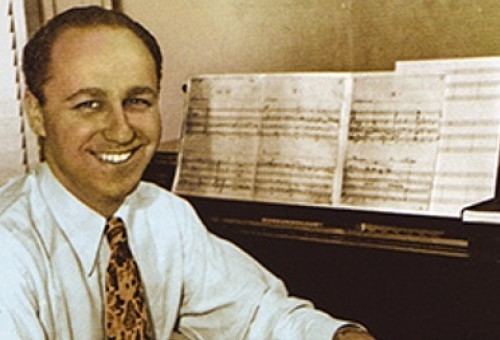 |
| Mervyn LeRoy |
Everybody has a favourite Mervyn LeRoy film even if one hasn't heard of Mervyn LeRoy. To be more precise, if you like American cinema, you have to have a favourite Mervyn LeRoy film.
Long before Billy Wilder, LeRoy was one of the most successful director-producers in Hollywood, but since his production activities were more "unit production" undertaken for studios such as Warner and Metro, he never enjoyed the recognition that the independent producers of the 1950s did. Yet, his name, both as director and producer, is linked to some of the best remembered films in the history of American cinema, films of enormous popularity, technical brilliance and politically progressive conceptions. His domain of responsibilities in the production of most of his films is so vast (picking the material, casting, producing, framing the shots, doing promotion) that those still adhering to
politiques des auteurs should be alerted, taking LeRoy very seriously. I'm not one of them, nevertheless I do take LeRoy seriously.
Some newly digitised tapes, courtesy of Pacific Film Archive, shed new light on a prolific and thrilling career. During an informal conversation worth nearly three hours of Q&As, Albert Johnson poses questions and LeRoy responds, reminiscing his career in chronological order. Conducted between April 16, 1970 and December 2, 1971, it was done with the prospect of a book publication. As far as I know, no book was ever written by Johnson about the cinema of LeRoy. The location for the interviews seems to be LeRoy's house where his wife is occasionally heard offering tea. Sometimes people drop in and evidently a dog is hanging around. The phone goes off quite often.
The first tape starts abruptly but my guess is that the discussion is about
Harold Teen (1928). This is first in a series of sudden interruptions, pauses and silences but all and all the tapes have a very decent audio quality and the conversation is engaging for the most part, even if LeRoy acts as another laconic Hollywood veteran using the most economic of languages with answers as brief as "sure" and "you bet!"
The films, people, and subjects discussed include (in the order of the tapes):
Showgirl in Hollywood (1930): all-talking musical with Technicolor sequences
The World Changes (1933): drama starring Paul Muni, Aline MacMahon and Mary Astor
Big City Blues (1932): drama based on the play New York Town by Ward Morehouse with stars Joan Blondell and uncredited appearances by Humphrey Bogart.
Hard to Handle (1933): comedy with James Cagney as a con artist who organizes a Depression-era dance marathon. "Cagney wasn't hard to handle. He was easy to handle," says LeRoy
Gold Diggers of 1933: working with Busby Berkeley & Sol Polito
Marie Dressler; Differences between working for Warner and MGM; Sidney Franklin;
Tugboat Annie (1933): "Beery was a mean man."
Paul Muni; Art directors and sets, "Who's John Wray?", Ralph Ince
Two Seconds (1932)
I Am a Fugitive from a Chain Gang (1932): "We told the truth."
Heat Lightning (1934): based on the play of the same name by Leon Abrams and George Abbott. "I never saw it!" -- "Bette Davis didn't like me."
Happiness Ahead (1934): comedy starring Dick Powell with Josephine Hutchinson
Oil for the Lamps of China (1935): "My favourite picture!" Shot on location near Arizona
Kay Francis ("sad woman")
Three Men on a Horse (1936): based on a funny and successful Broadway play of the same name starring Frank McHugh and Joan Blondell
Anthony Adverse (1936) and working with Erich Wolfgang Korngold
Lana Turner's discovery demystified and LeRoy's subsequent move to Metro; lack of interest in Marx Brothers
They Won't Forget (1937)
 |
| On the set of I Am a Fugitive from a Chain Gang |
Tonight or Never (1931)
Joe E. Brown comedies
Five Star Final (1931) and working with Edward G. Robinson ("Do you think
Two Seconds could be made today?" asks LeRoy.)
The World Changes (1933): Child actor and future director Richard Quine is in the film.
Three on a Match (1932) & directing Ann Dvorak
On Bogart: "He thought he was a tough guy but he was sweet. He couldn't lick a fly! In those days they all seem to be geniuses."
Gold Diggers of 1933: talking about the colours of the female costumes in the Shadow Waltz number and the film's junket (city-to-city train journey); in-jokes in the films
[There's jump here. The sound quality and the period they are discussing change so it must be recorded some time later]
Waterloo Bridge (1940)
"Every week I have three or four pictures on television."; Bronisław Kaper; Visiting London's National Film Theatre located right under the Waterloo Bridge; San Francisco Film Festival where in 1965 LeRoy was awarded.
Escape (1940): An American in pre-WWII Nazi Germany tries to free her mother from a concentration camp. (This is the second time I'm hearing Hungarian actor Paul Lokas wasn't a good actor.); Arch Oboler not liking to wash his face!; "I had hand-held camera in my movies... It doesn't mean a damn thing."
Blossoms in the Dust (1941): working with Greer Garson. "My first film in color?"; "The only problem I had was with that son-of-a-bitch Walter Pidgeon!" LeRoy used dancing dolly for the first time since Pidgeon couldn't dance.
Lana Turner












